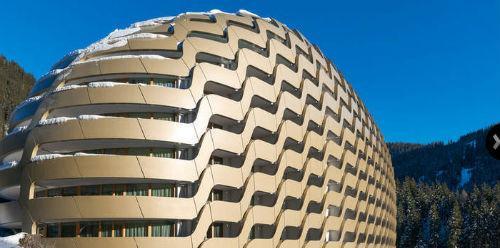 Latin America. CommScope will hold the webinar "Connected and Efficient Buildings" on August 24, where it will talk about new technologies in Smart Buildings, Corporate Mobility, as well as the AIM standard.
Latin America. CommScope will hold the webinar "Connected and Efficient Buildings" on August 24, where it will talk about new technologies in Smart Buildings, Corporate Mobility, as well as the AIM standard.
Workplaces today are transforming with incredible speed, thanks in part to an evolving workforce, in addition to advances in technology and the need to reduce operating costs. If we add to this the large number of people who connect every day to equipment, systems and applications, the challenges, as well as the new opportunities for the creation and maintenance of the infrastructure of these places are also greater to create increasingly dynamic environments, such as the so-called Smart Buildings.
What are Smart Buildings? Why are they so important?
Until a few years ago thinking about truly Intelligent Buildings was not even possible, however the landscape has changed and with the rise of the Internet of Things (IoT), everything seems to indicate that Connected and Efficient Buildings will be a major constant. A few months ago Gartner made a prediction where it states that by 2020 there will be 20.8 million connected devices, a panorama that confirms the growth of intelligent infrastructures for corporate environments.
In spite of everything, according to Juan Pablo Compagnucci, Solution Architect for Intelligent Buildings – CALA Region at CommScope, "It is still difficult to find in the market a single definition of what an 'Intelligent Building' is, since there is no concept that encompasses all the aspects that intervene in it; anyway something that is common in these buildings is the essential issue that they are connected and efficient." This means that an Intelligent Infrastructure must primarily guarantee two characteristics: being connected, having an integrated communications infrastructure (both wireless and wired) that facilitates communication between people (p2p), people and machines (p2m) and between machines (m2m), but also with the outside; and be efficient in meeting the challenges not only of the IT areas, but also of the Facility and Real Estate areas such as energy efficiency, space management, employee satisfaction, etc.
When these two situations are met, it can be said that an Intelligent Building fulfills its mission, which is important because, in addition to allowing constant and efficient connectivity, they have a significant impact on the environment and people's health. As Eng. Compagnucci points out, "an example is that in the United States buildings are responsible for 14% of water consumption, 30% of waste generation, 38% of carbon dioxide emissions and 24 to 50% of energy use, but when a building is efficient it can consume up to 26% less energy, reduce the cost of maintenance by 13% and reduce carbon dioxide emissions by up to 33%, so the impact is significant"
Management, Energy to the Edge and Corporate Mobility
One of the key points of a Smart Building lies in the fact of not only having an adequate communications infrastructure, but also being able to be efficient when it comes to managing devices, energizing them remotely and keeping them properly connected in a wired or wireless way, so that it can provide the benefits that are expected. Therefore, there are three fundamental concepts that need to be addressed in detail when we talk about Smart Buildings: Management with AIM systems, Energy towards the edge, and Corporate Mobility.
First, AIM systems - Automated Infrastructure Management - are defined by the soon-to-be-published ISO/IEC 18598 standard as integrated hardware and software systems that allow the management of communications infrastructure, as well as the exchange of data with other systems; "In addition, they allow us to have as benefits the ability to have accurate documentation of the physical layer of infrastructure and updated automatically, manage changes, incidents and capacity, and manage assets through their identification and location in real time in corporate entities," added Juan Pablo Compagnucci.
Edge Power (or remote energization) refers to the growing trend of energy and data convergence, by DC powering devices using the same communications infrastructure that uses data. In this sense, and with the rise of the Internet of Things (IoT), technologies such as PoE (and future standards in development with more power such as 4PPOE) have made a wider range of devices such as WiFi APs, Security Cameras, LED network lighting, Digital Screens, etc. be considered. Eng. Compagnucci then states: "The ability to connect these devices without separate high-voltage electrical wiring – and the costly specialized labor that entails – is being of great help to those responsible for corporate environments, by removing many obstacles to the location of devices, increasing the safety of people and reducing implementation costs by up to 50%."
Finally, Corporate Mobility refers to considering wireless connectivity as the next utility within corporate spaces, allowing people to have homogeneous, efficient and secure connectivity throughout the entity. "This way users can be connected all the time, regardless of whether they do it through modern WiFi networks (802.11ac wave2) or through the cellular network (LTE over DAS or Small Cells). This is ensured with an adequate communications connectivity platform that supports all critical mobility applications for smart buildings."concluded CommScope's Solution Architect for Intelligent Buildings for CALA.
If you want to know more about New Technologies in Smart Buildings, register for the webinar at no cost in the Webinar "Connected and Efficient Buildings" HERE


























Leave your comment